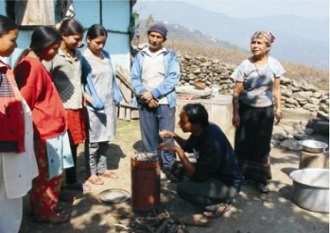BY ANDRES OPPENHEIMER
Presidents, rock stars and business leaders from around the world are pledging hundreds of millions of dollars to rebuild Haiti, which is great.
But they are making a potentially disastrous mistake — focusing too much on bricks, and too little on trees.
I was alerted to this problem in a conversation with Carlos Morales Troncoso, vice president and foreign minister of the Dominican Republic, Haiti’s neighbor on the island of Hispaniola. No other country has been more directly affected than the Dominican Republic by the flood of Haitian evacuees following the Jan. 12 earthquake that claimed the lives of more than 200,000 people in Haiti.
Morales Troncoso was in Miami, on his way back from an international conference in Montreal, where the United States, France and more than a dozen other major nations kicked off a 10-year plan for the reconstruction of Haiti. And the Dominican foreign minister was not impressed by what he heard at the meeting: There was too much talk about rebuilding government offices, schools and hospitals, and too little about planting trees, he told me.
“What’s the point of rebuilding Port-au-Prince, or moving it south, if we don’t reforest Haiti?,” he asked. “Where are they going to get their water from? Where are they going to farm? It makes no sense to rebuild a country that won’t have trees.”
Haiti has long been the poorest country in the hemisphere, to a large extent because of deforestation, he reminded me. Early in the 20th century, about 60 percent of Haiti’s landscape was covered with forests. But since then, Haitians have cut down nearly 99 percent of the trees in the country to use them as firewood or charcoal for cooking.
…
But Morales Troncoso told me that the explanation is much simpler: Dominican Republic governments started subsidizing natural-gas cooking stoves to peasants nearly 50 years ago, so that they would not use wood or charcoal for cooking.
“The first measure of [late president Joaquin] Balaguer in 1966 was to shut down all sawmills, and to start subsidizing natural-gas stoves to the poor,” he said. “Haiti needs a massive plan to give natural-gas stoves to the poor, hand-in-hand with a scientific reforestation program.”
Link to complete article – http://www.miamiherald.com/news/columnists/andres-oppenheimer/story/1455503.html



